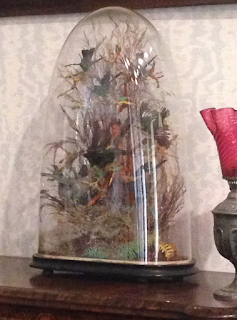Charles as a Skeptic: Oxford University
July 14 - Day 1
 |
The Great Quadrangle was indeed great. The grandiose Gothic architecture exuded wealth and privilege and really helped me visualize how the good 'ol Oxford boys, Charles and Sebastian, lived.
|
 |
| The Mercury Fountain in the Quad served as a great reminder of the Catholic symbolism of fountains in our novel this week. In the novel the aesthetic beauty of Brideshead draws Charles in and leads him to the Catholic faith. In a similar manner, the beauty of Christ Church's campus tends to draw one in. As we left, I heard many people in our group chatting about wanting to attend Oxford! |
Charles as a Skeptic/Believer: Eltham Palace
July 15 - Day 2
 |
| In our novel, Brideshead is an estate similar to the palace, as both of the homes "grew silently with the centuries, catching the best of each generation" (Waugh, Ch. 1). Basically, as time passed, and with each resident, these places grew and changed and became sort of a patchwork of the past. In this photo the medieval architecture beautifully clashes with the Baroque. |
Charles as a Believer: Hampton Court Palace
July 16 - Day 3
 |
| Similar to Eltham palace, Hampton Court was also a hodge-podge of eras and styles. Here the quirky Tudor style peaks out behind the streamline Baroque style. |
 |
| I found these photos to be particularly interesting. Depending on how one looks at the palace, the different architecture causes it to look like two completely different palaces: the Tudor Palace or the Baroque Palace -- a constant battle between Catholicism and Protestantism. |



















